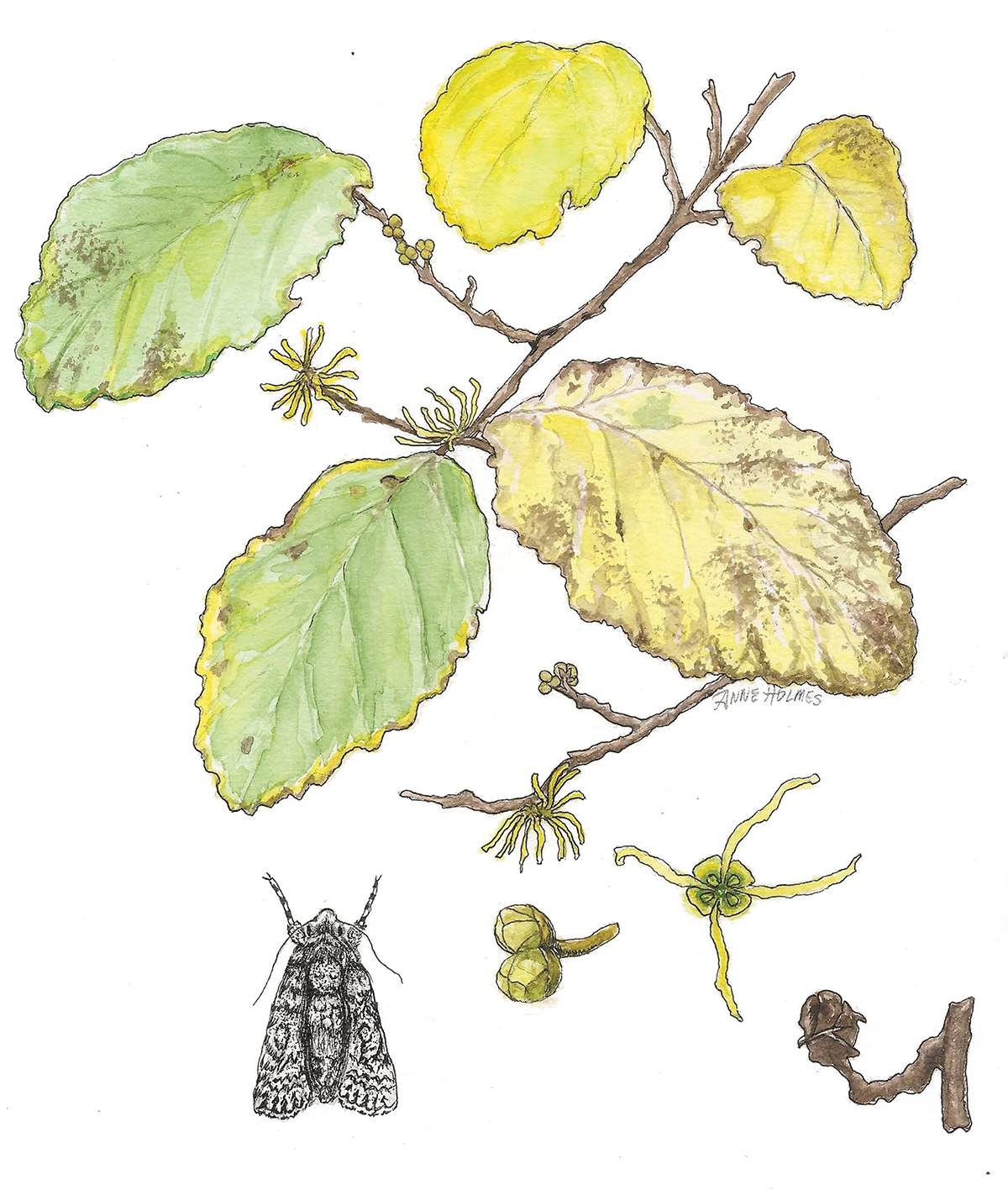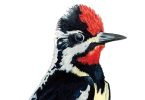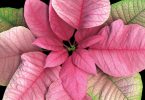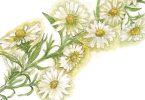By Elaine Smyth
American witch hazel, Hamamelis virginiana, is a winter-blooming wonder, brightening the woods with its spidery yellow blossoms from October through January. A native of North America, it typically grows 10 to 15 feet tall, usually in a dense, multi-stemmed form. Its light brown bark is smooth, and the oval leaves, with their wavy, scalloped edges, turn bright yellow in the autumn, dropping before the blossoms appear. Despite its name, this unusual native shrub has nothing to do with sorcery: witch is derived from the Old English word wych, meaning “bendable or pliant” (think wicker furniture).

Anne Holmes, artist
On warm winter days, the spicy-sweet aroma of blooming American witch hazel attracts a plethora of insect pollinators, hungry for their last snack at the end of the growing season. With very sticky pollen, unsuitable for wind dispersal, the species relies on this sparse supply of insects for cross-pollination. As often happens, nature—or co-evolution—has supplied a special insect for this purpose: the witch hazel dagger moth, Acronicta hamamelis. Although it is cold-blooded like all insects, the witch hazel dagger moth can raise its body temperature as much as 50 degrees Fahrenheit, just by shivering! Thus it can and does fly when witch hazel blooms, a time when many insects are immobilized by cold.
American witch hazel has a long history of use by humans as an astringent and anti-inflammatory herb, most commonly in topical applications, but also brewed as a tea. Its seeds are edible, but they are not easily collected due to its unusual seed-bearing process.
After its flowers are pollinated during their winter bloom, they go into a resting state. The seeds do not even begin to develop until the following spring and do not mature until fall. They are often still present when the next year’s flowers appear, justifying the plant’s Latin genus name, Hamamelis, which means “together with fruit.” When each seed pod finally opens, it flings its two small brown seeds explosively away from the parent plant, hopefully propelling them onto fertile, sunny ground to start the next generation of this delightful winter-blooming native plant.
Upcoming Events at Asheville Botanical Garden
Bee My Little Baby – Intro to Bee Nesting with Brannen Basham
Tuesday, December 9, 6–7:30 p.m.
Certified Pollinator Advocate Series. Learn about the wide variety of native bees and bee nests, and how to provide habitat for these important pollinators.
Winter Edible Plants with Roots Marshall
Saturday, January 10, 1–3 p.m.
An introduction to edible winter plants and how to find them, covering the basics of plant identification and foraging best practices.
Learn more about classes and register online at AshevilleBotanicalGarden.org.
Asheville Botanical Garden Visitors Center/Garden Path Gift Shop holiday hours are 10 a.m. to 4 p.m. daily through December 21. The gift shop, managed and staffed by volunteers, features garden-themed art, toys, tools, cards, books and works by local artists and artisans. All proceeds benefit the Garden.
Asheville Botanical Garden, 151 W.T. Weaver Boulevard, is an independent nonprofit including more than 750 species of native plants in a 10-acre naturalistic setting. Our mission is to promote and showcase the value and diversity of plants native to the Southern Appalachian region by serving as an educational resource and urban destination for nature study and enjoyment. Supported by members, donors and volunteers, the Garden is free to all and is open daily from sunrise to sunset, year-round.






